John Lennon Wall Prague
Lennon's wall is the wall of the Maltese Garden on the northern side of the Great Square in Prague, in Malá Strana , where inscriptions and paintings appear with the reference to John Lennon 's singer from the 70s.
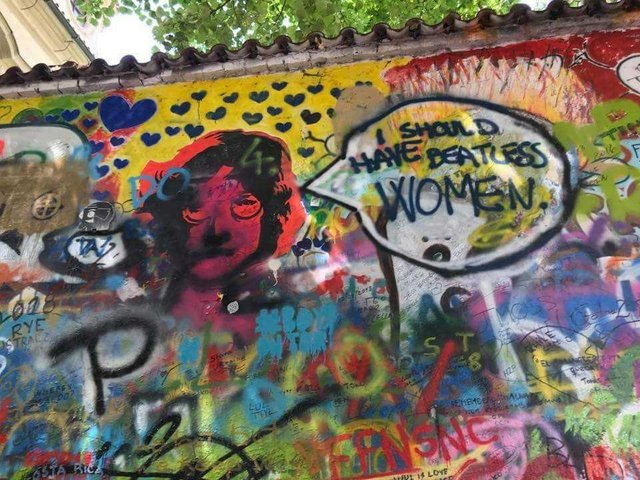
The history of inscriptions on the wall dates back to the 1960s, when messages for Jan Werich, who lived nearby Kampa , later on protest inscriptions , appeared. Petr Blažek states that painting on the walls of small-country houses mentions in his 1977 pateon the signature of Charter 77 Jiří Bareš . Blažek writes: "The author of the samizdat's text recalled in the autumn of 1967, when he and his friends wrote protest slogans in Prague's night streets after the Literary Newspaper was stopped . He also recalled the period after the occupation of Czechoslovakia by the Warsaw Pact troops. At the end of August 1968, the inscriptions on the walls of Prague were so many that painting took several years before the writing stopped under the new facades. At the time Bareš wrote his poetry, (Spring 1977) , there was, in his words, only a flood of banalities in the same place at Čertovka, which had no visible relation to the relations at that time. At the same time, however, he noticed that the verses spread on the plaster and stretched to the middle of Velkopřevorské Square. "
Since the 1970s it has been called the " Wailing Wall ". There were chanting written poems on her - mostly love affairs. Occasionally they were whitewashed, but others soon appeared.
After the death of John Lennon in December 1980, somebody took advantage of the empty stone slabs that were probably part of the public water supply to create a symbolic tombstone for John Lennon . An unknown author wrote a chalk about John Lennon and drew a cross above the inscription. Symbolite tombstones wore flowers, candles and Lennon's photo. At the beginning of 1981, someone replaced the inscription with a new template, with Lennon's Biographical Data, which supplemented his photographs. Graffiti inspired by John Lennon and fragments of the lyrics of the Beatles band began to appear on the nearby walls soon.
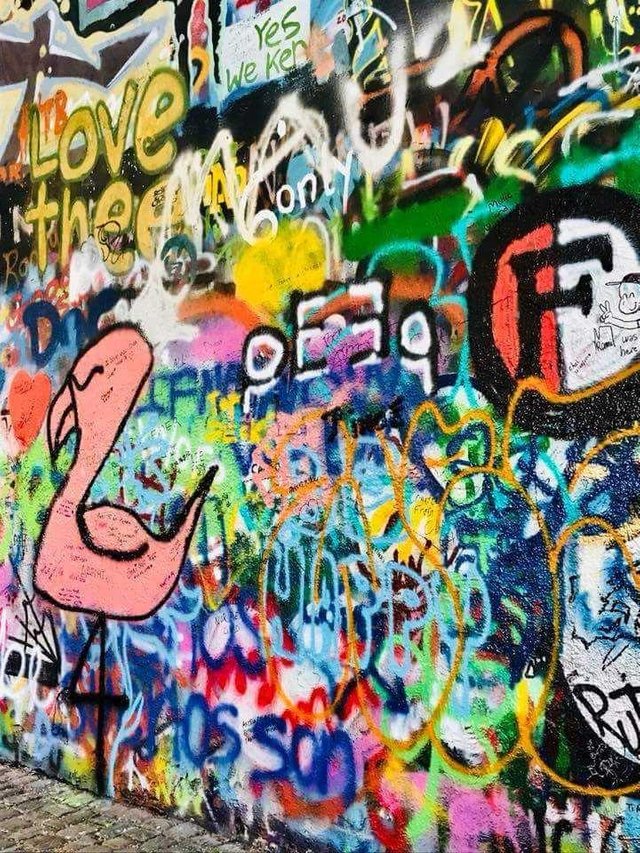
The Jazz Section contributed to the renown of the site , which included photographs in the autumn of 1981 in the Lennon Proceedings. Several samizdat or exile magazines were also written about Lennon's wall.
In April 1981, the wall was first spotted, green in color, apparently in connection with preparations for the 16th Communist Party Congress. According to Romano Laube, this flat overlay of the wall completely changed the atmosphere of the place, the poet disappeared from the wall, and a number of passages with a political subtext such as "Palach would weep" appeared. The wall was repainted several times - both green and gray. After the meeting of dozens of young people on the first anniversary of Lennon's death on December 8, 1981, posters were placed on the wall because they did not help repainting. The annual meeting of Lennon's fans in the years to come moved to the square near Čertovka and gradually grew in the evening marches of Prague against which the police intervened. The press wrote about the participants as alcoholics, mentally handicapped, sociopaths and agents of the Western world; their activity was called lennonism.
Since the mid-1980s, Kampa has also signed petitions against the deployment of nuclear weapons on both sides of Europe, demanding the release of political prisoners and allowing civilian service . The initially small, spontaneous encounter has grown under the influence of police intervention in an anti-regime appearance. It has been the largest protest since 1970, and it has been a street demonstration at the end of the 1980s. Since the Lennon meetings in the second half of the 1980s did not help to deter hundreds of deployed police officers, the StB handled the situation differently: with the approval of the Bureau of the CC of the Central Communist Party, organized a December meeting in 1988 the Socialist Youth Unionand in Čertovky organized a folk concert. The proposal of the communist functionary Miroslav Stepan to use the "lennonian traditions" and the establishment of the official Lennon commemorative plaque commemorating his peace activities at the Velkopřevor Square to approve the CPC.
In December 1989, the annual meeting in an euphoric atmosphere was originally staged by John Lennon's opposition club. A little later, the banner area was removed from the wall.
After the restoration of the Maltese Knights Order, the owner decided to repair the wall. At the proposal of John Lennon Peace Club, the order left the painter Franz Fischer on the wall to create a portrait of John Lennon. According to the original idea, only the flowers should be drawn on the wall around the portrait, but these ideas were not fulfilled.
The wall changed over time, and the original Lennon portrait was long hidden behind a layer of new paintings. Each time the paintings were painted with color, the next day many verses and pictures of flowers were restored. Today, the wall represents a symbol of free ideals, including peace and love ( love and peace ).
In November 2000, members of the Rafani arts group blushed the wall across the wall, placing love in the middle , which they presented as a response to the political situation at that time and the empty spirit of the place. Lennon's inscriptions began to appear again on the wall. Several months later, the owner, upon the order of the office (according to Peter Blazek, the monument office), painted the wall with an ocher color.
After the turn of the century, the wall became a tourist attraction and a place visited by crowds of tourists. The original idealistic inscriptions began to push out messages of all kinds. The wall is owned by the Knights of Malta, who allegedly approved the drawing of graffiti on the wall.
On the night of Sunday 16th, on Monday, November 17th, 2014, somebody blustered the wall and made it "Wall is over!" (Lennon's paraphrase War is over1971). Since Tuesday morning, new inscriptions have begun to appear on the wall according to iDnes.cz. Representatives of the Soviet Order of the Knights of Malta - the Czech Grand Priory, described the act as vandalism and said they had filed a criminal complaint with an unknown offender. A spokesman for Prague 1 said that only on Lennon's wall spray was perceived as a symbolic work that had its history, and that overlaying the wall on white and writing the inscription "Wall is over city" as a spray that is not backed up by the city. The police spokesperson confirmed the acceptance of the crime but expressed the view that the prosecution was not a criminal act because the wall is essentially intended for it, but it is at most a misdemeanor, either against civil cohabitation or property, which will be investigated. The student streetart group Pražská služba, whose representative said that they did it in honor and during the celebrations of November 17, with a reference to John Lennon, was signed for authorship .
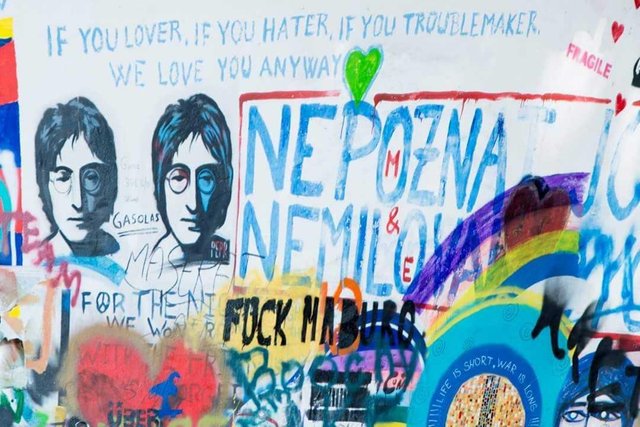
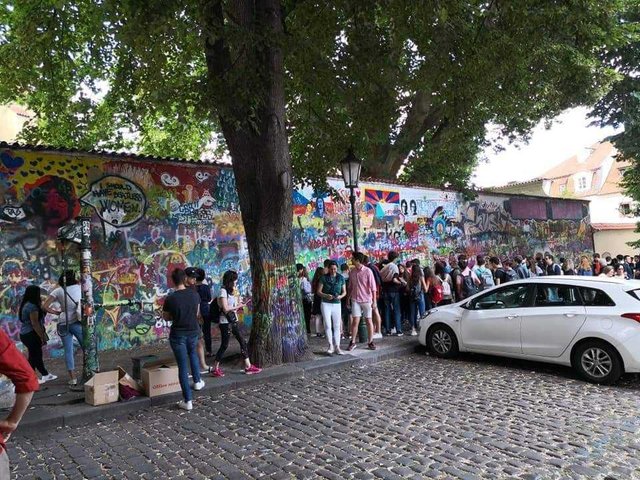
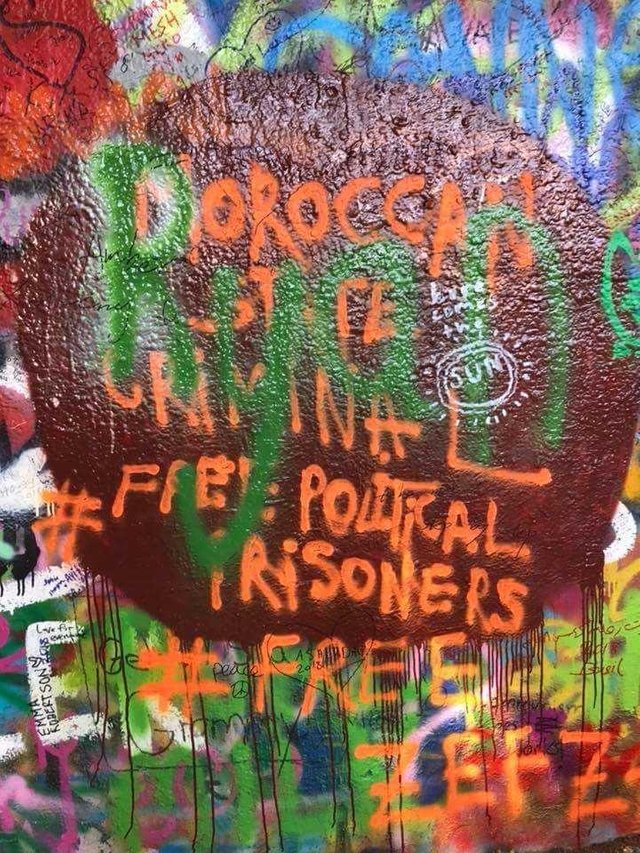
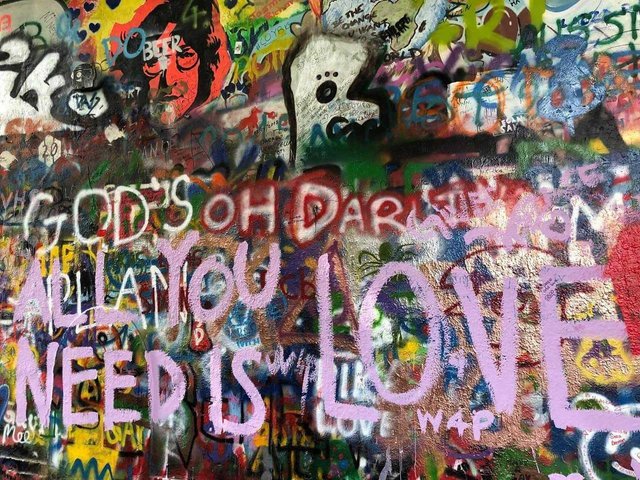
In a statement calling themselves "art school students," they refer to the fact that 25 years ago a large totalitarian wall fell, and the white wall symbolized freedom, giving space to new messages of the present generation.
World of Photography
>Visit the website<
You have earned 6.50 XP for sharing your photo!
Daily photos: 1/2
Daily comments: 0/5
Multiplier: 1.30
Block time: 2018-06-30T10:32:45
Total XP: 6.50/100.00
Total Photos: 1
Total comments: 0
Total contest wins: 0
Follow: @photocontests
Join the Discord channel: click!
Play and win SBD: @fairlotto
Daily Steem Statistics: @dailysteemreport
Learn how to program Steem-Python applications: @steempytutorials
Developed and sponsored by: @juliank
This user is on the @buildawhale blacklist for one or more of the following reasons: